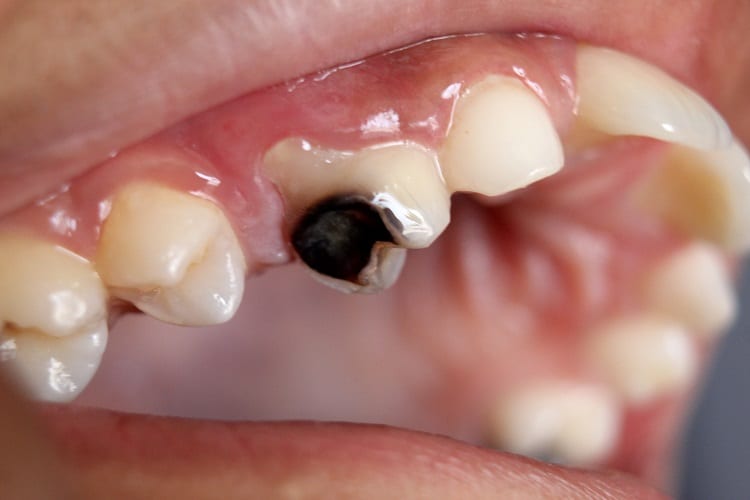What do you call an astronaut’s cavity? A black hole.
Aside from a bit of awful dentist humor, cavities can be serious matters. We see a lot of adult and pediatric patients with cavities each day, and according to the National Institute of Dental and Craniofacial Research, more than 90% of American adults have experienced at least one in a lifetime. American adults also average 3 decayed or missing permanent teeth and 13 decayed and missing permanent surfaces! If left untreated the bacteria buildup, called plaque, can continue to make its way through tooth enamel and cause decay…or even worse, lead to some poorly written dentist jokes.
Before we get into how to treat them, it’s important to first understand what a cavity is and how a dentist can identify one. Oftentimes people have a toothache and automatically assume it means they have a cavity, but that’s not always the case. Other times people ignore small signs like sensitivity or slight pain when eating or drinking something sweet or hot and cold. If you put off seeing the dentist, in the long run it can only makes things worse.
What’s a cavity?
Most people call them cavities, but dentists also call them dental caries. No, nothing is being carried here. It just refers to decay within a tooth. Over time, this decay creates a hole that can grow larger and larger, eventually causing pain, infection, and requiring extraction. Believe it or not, it’s every dentist’s goal to prevent pulling teeth.
So what causes this hole to form in a tooth? Blame the sugar and starch loving bacteria in your mouth. As the bacteria chows down it forms plaque–a clear sticky layer coating the teeth. Without adequate brushing and cleaning, plaque builds up and hardens under or above your gum line into tartar. This thick buildup makes plaque hard to remove and creates a protective shield for bacteria while it eats away at the tooth’s hard, outer layer called the enamel. If left unchecked, the bacteria can continue its destructive path through the soft dentin layer and eventually to the innermost pulp of the tooth containing nerves and blood vessels. The pulp swells from the bacterial onslaught and presses on the nerves causing pain.
Treatment depends on the severity of the cavity. For early stages, dentists can use a special fluoride treatment to help restore enamel and reverse a cavity. Advanced decay requires fillings, crowns and bridges, root canals, and possible extraction (tooth removal) if the decay reaches the innermost part of the tooth.
What are the symptoms?
Cavity symptoms vary depending on how long you’ve had them and where they’re located. During the early stages, you probably won’t even realize a cavity is forming, which is why it’s so important to visit your dentist regularly for cleaning even when your mouth feels fine. As the decay continues, you may experience toothaches, sensitivity, sharp pain when eating or drinking something sweet, hot, cold, visible holes in your teeth, staining on the surface of a tooth, or pain when biting down. Never ignore mouth pain. Even if its harmless, a quick visit to your dentist can help rule out and prevent serious complications.
What can I do at home?
Beyond frequent dental cleanings, there are a number of important steps you can take to prevent serious tooth decay:
- Brush with a fluoride toothpaste at least twice a day. Use floss to clean the spaces between your teeth and help keep your gums healthy. Yes you hear this advice all the time, but that’s because it works when done correctly.
- Eat fresh fruits and vegetables to increase saliva flow. Sounds gross, but substances found in saliva actually help counter the acid produced by bacteria. Unsweetened coffee, tea and sugar-free gum can help wash away food particles too.
- Talk with your dentist about dental sealants to protect tooth enamel from plaque and acid. The Centers for Disease Control and Prevention (CDC) recommends sealants for all school-age children.
- Consider fluoride or antibacterial treatments. Your dentist may recommend periodic fluoride treatments or antibacterial mouth rinses to help reduce decay and cut down on harmful bacteria in your mouth.
When should I see a dentist?
It’s always a good idea to see your dentist at least once a year for a checkup and cleaning. Every 6 months is ideal as frequent cleanings help prevent plaque build up and tooth decay.
Remember, regular dental visits and good brushing and flossing habits are your best protection against cavities and tooth decay. Together, they can help keep you from getting a cavity.

